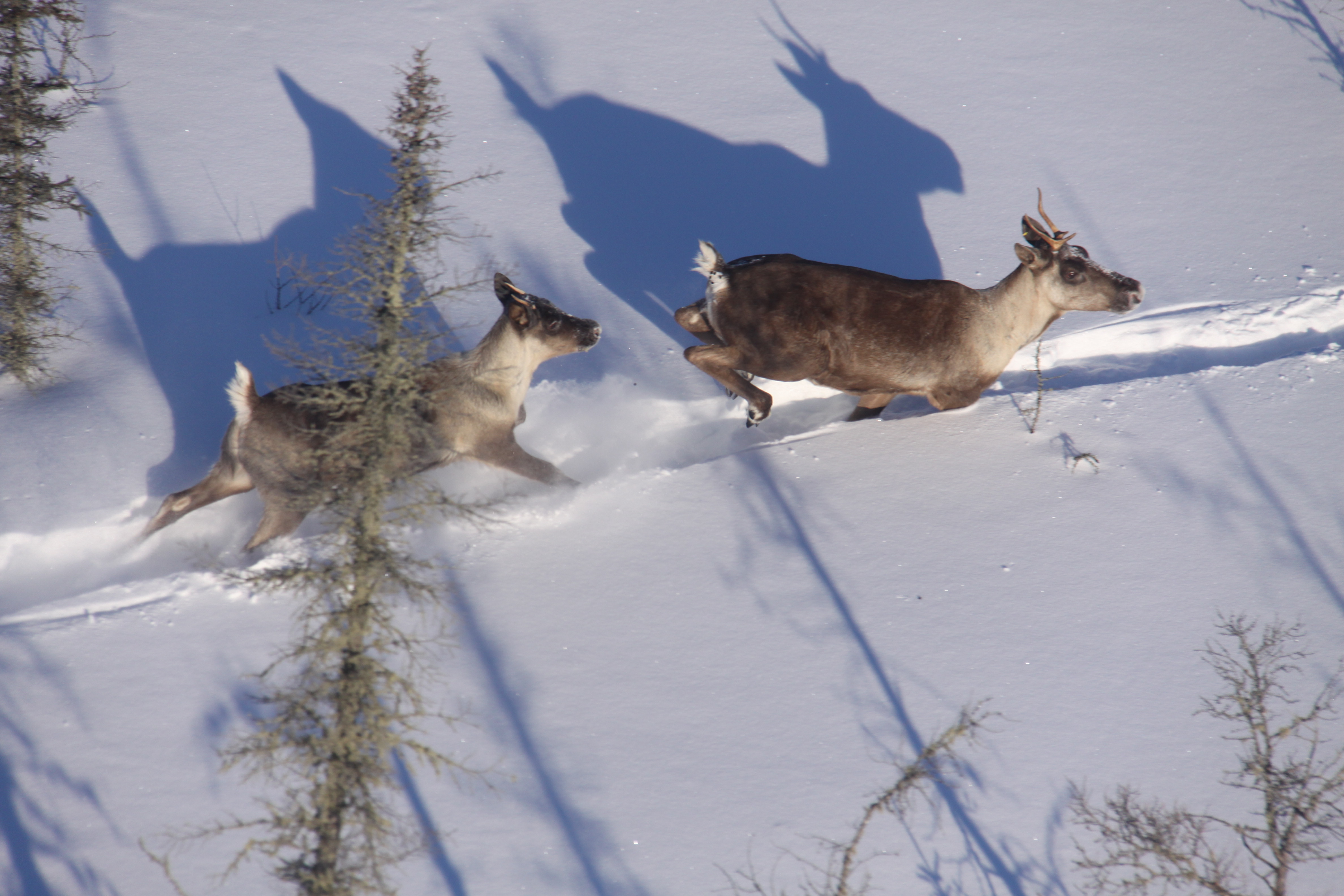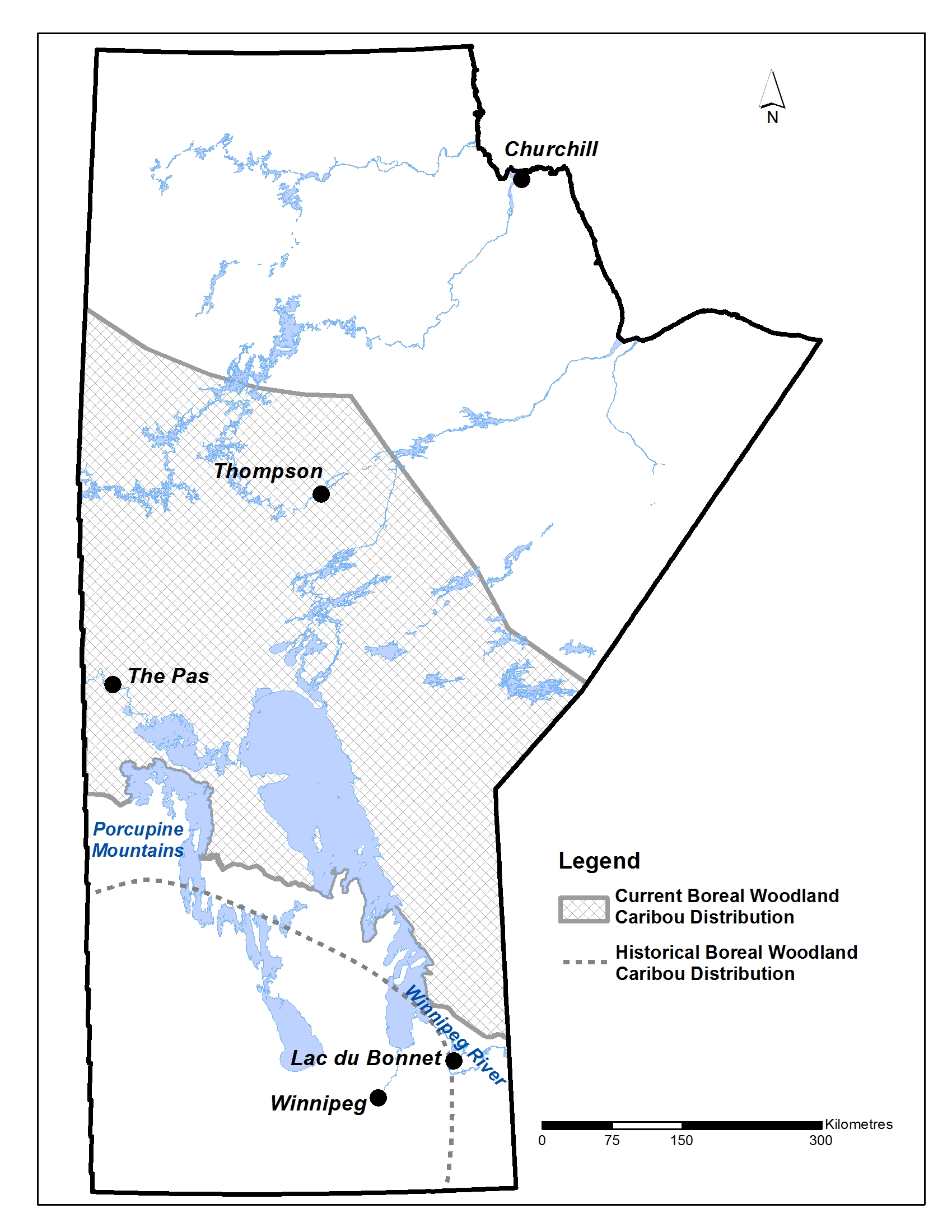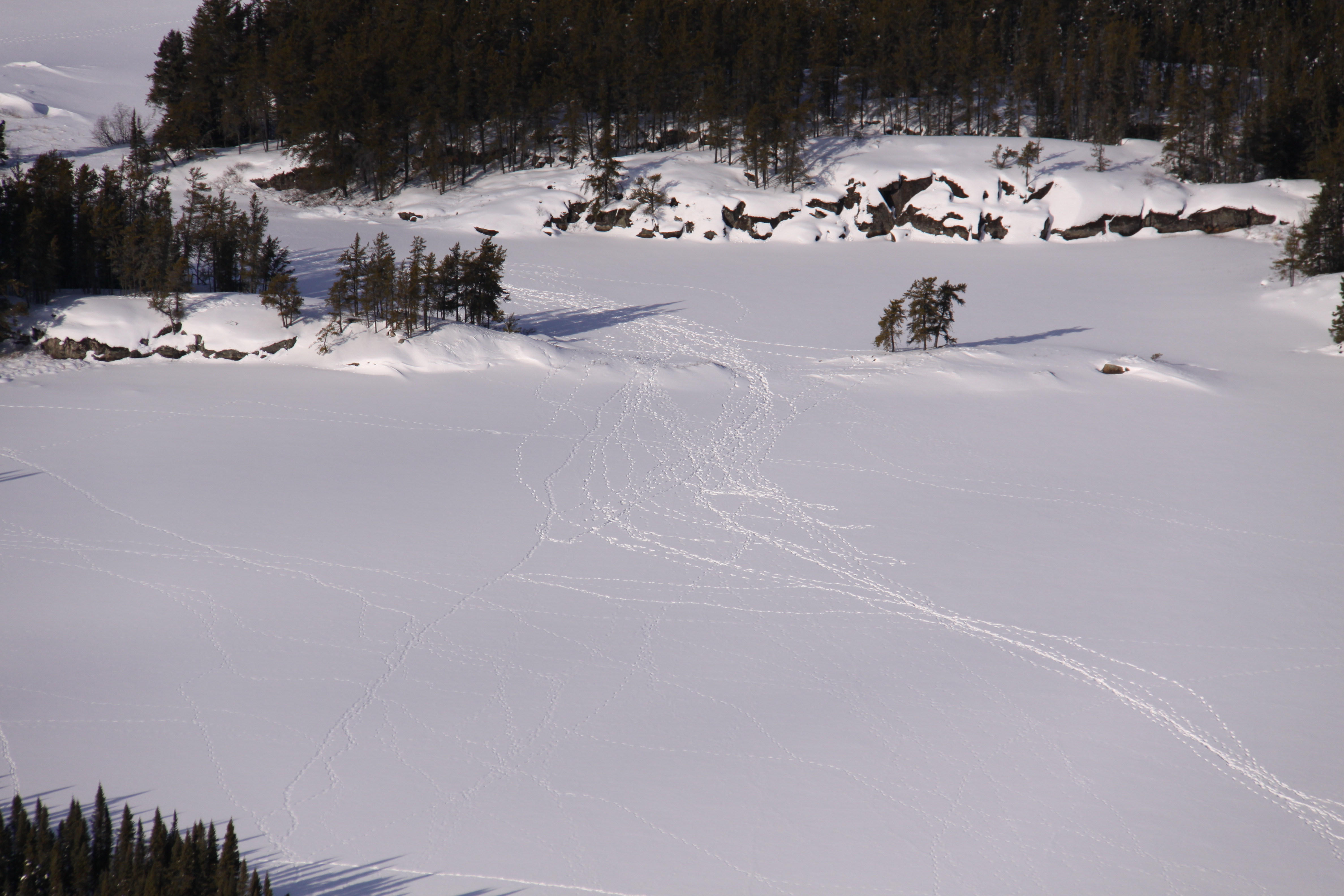Caribou management efforts and monitoring projects have occurred within Manitoba for over 40 years and have been instrumental in survival of the species. These projects have encompassed collaring of caribou, recruitment surveys, distribution surveys and genetic analysis. The intent of these efforts has been to enhance the knowledge base for the species, to generate baseline data for furthering our ability to mitigate development impact and to ensure the species remains as an integral component of Manitoba’s wildlife mosaic.
Manitoba's Boreal Woodland Caribou Recovery Strategy (2015) guides boreal caribou conservation and recovery within the province. Manitoba’s recovery strategy is a comprehensive strategy that applies to the current distribution of boreal caribou. It recognizes that there are many challenges to boreal caribou conservation. The boreal forest provides many important cultural, economic and social benefits. Many of those benefits can put boreal caribou and their habitat at risk. The recovery strategy concluded that due to relatively high levels of human-caused habitat disturbance and fragmentation, boreal caribou populations were at higher risk of decline and potential extirpation.
Manitoba is committed to undertaking boreal caribou management through a comprehensive, collaborative and accountable provincial program. Through the development of a provincial range planning guidance document and individual management unit range plans, management decisions will balance the demand for boreal forest resource use with an emphasis on boreal caribou conservation.
By building on existing partnerships with industry, Indigenous governments, non-government organizations and academia the recovery of boreal caribou will be enhanced.
The federal government has created a national recovery strategy for boreal woodland caribou (2012, amended in 2020) and in 2018, released an Action Plan for boreal caribou. Visit the federal Species at Risk Public Registry website at:
• Recovery Strategy for the Woodland Caribou, Boreal population (Rangifer tarandus caribou) in Canada
• Action Plan for the Woodland Caribou (Rangifer tarandus caribou), Boreal Population, in Canada: Federal Actions
These strategies outline that in order to achieve self-sustaining woodland caribou populations, provincial jurisdictions must protect, and in some cases increase, critical habitat within identified caribou ranges. Critical habitat includes the need to ensure that at least 65 per cent of each caribou range is undisturbed by human or natural disturbance events, and that caribou biophysical habitat features are adequately conserved and managed.






